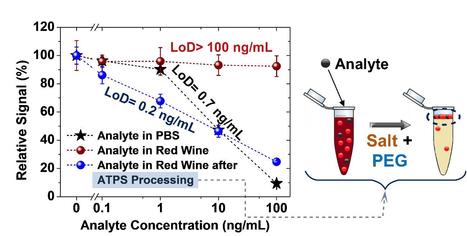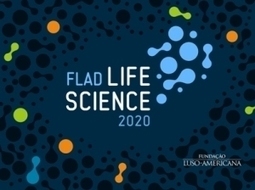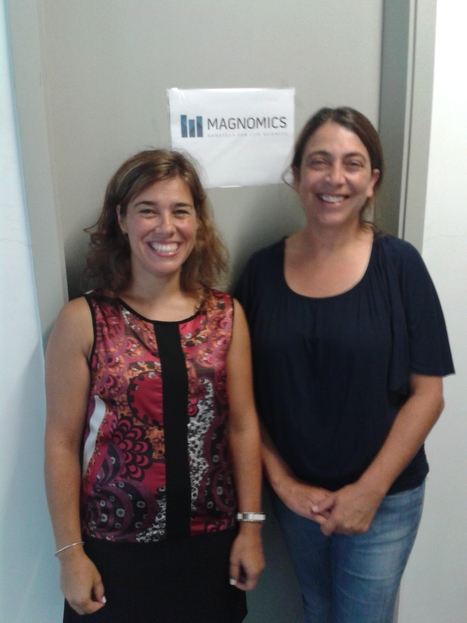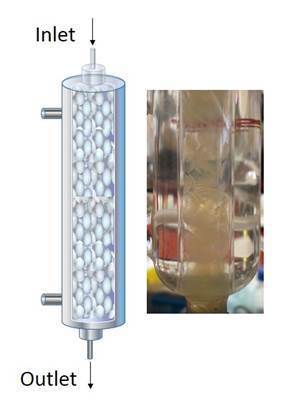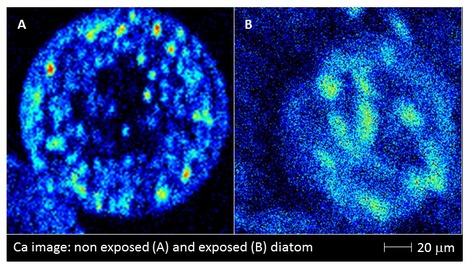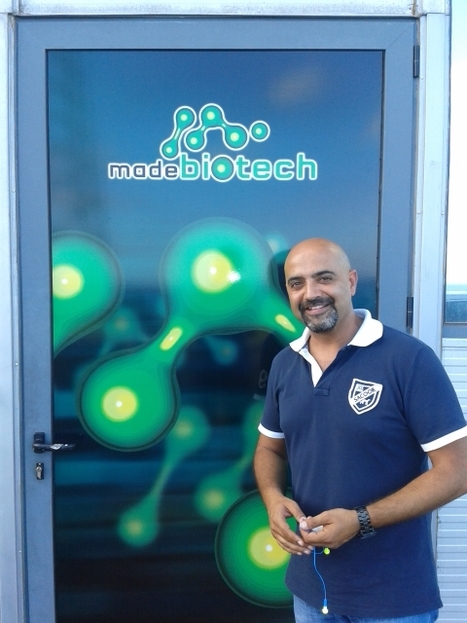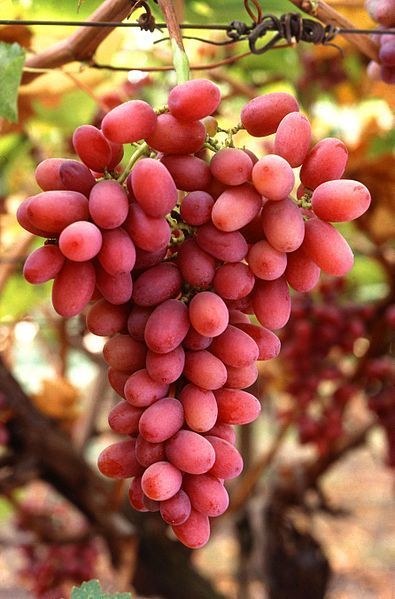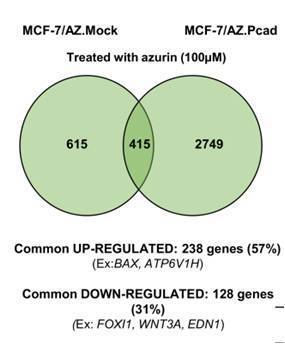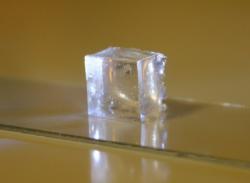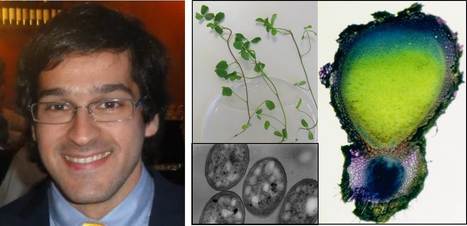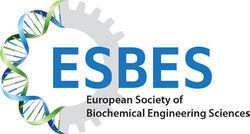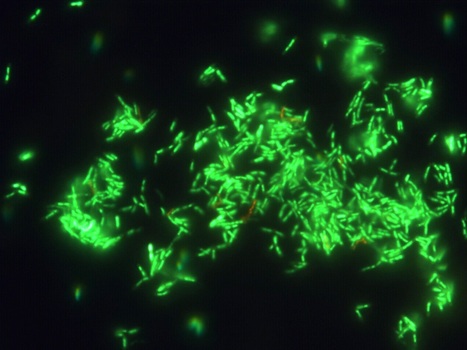A joint publication of researchers from BERG-iBB and INESC-MN in the journal Lab-On-a-Chip describes a new method of integrating a liquid sample preparation step based on aqueous two-phase systems in continuous with an immunoassay. This was performed in microfluidic channels with a depth of 20 µm, four times thinner than the average human hair. The strategy allows simultaneous neutralization of matrix interferents, analyte concentration and detection in a single step, thus having great potential for rapid and sensitive point-of-need applications without the need for complex sample preparation procedures. The work was performed in the context of Ruben Soares's PhD in Biotechnology (supervisors R Aires Barros, JP Conde). Click on the title to learn more.
Get Started for FREE
Sign up with Facebook Sign up with X
I don't have a Facebook or a X account

| Tags |
|---|
 Your new post is loading... Your new post is loading...
 Your new post is loading... Your new post is loading...
No comment yet.
Sign up to comment
"figshare is a repository where users can make all of their research outputs available in a citable, shareable and discoverable manner. [...] figshare allows users to upload any file format to be made visualisable in the browser so that figures, datasets, media, papers, posters, presentations and filesets can be disseminated in a way that the current scholarly publishing model does not allow.[...] All research made publicly available of figshare gets allocated a DataCite DOI at point of publication. This means that your research can be cited using traditional citation methods, no matter what form the research output come in."
Miguel Prazeres's insight:
An interesting new way to publish/share data that is citable
Miguel Prazeres's insight:
"In a collaboration between BERG-IBB and INESC-MN, researchers have recently published a new method of enhancing immunoassay sensitivity using Polymer-Salt aqueous two-phase systems. This strategy, applied towards the detection of the mycotoxins Ochratoxin A and Aflatoxin B1 in wines and beer was found to be able to prevent matrix interference effects and provide an analyte concentration effect in a single step. This type of processing holds promise in improving the versatility and robustness of immunoassays in dealing with low target analyte concentrations in highly complex matrices. The work is performed in the context of Ruben Soares's PhD in Biotechnology (supervisors R Aires Barros, JP Conde). Click on the title to learn more." "Promoting scientific research in different areas of biomedical research is the main goal of the Maratona da Saúde Awards. Created by Maratona da Saúde (MdS) Association, Fundação para a Ciência e a Tecnologia (FCT) joined the initiative in September 2014, when a Memorandum of Understanding was signed. A call for proposals is now open." "The Fundação Luso-Americana is launching a scientific award in the total amount of 800 thousand euros, for 3-4 years, to sponsor two structuring projects in science and technology." Former iBB researchers Sofia Martins (PhD Biotechnology, IST 2008) and Verónica Romão (PhD Biotechnology, IST 2009) are currently leading the biological research at Magnomics, a biotech start-up committed to creating the new generation of molecular diagnostic devices, with applications in human health, veterinary health, and in the food industry. Sofia and Verónica partnered with Filipe Cardoso (INESC-MN), José Germano (INESC-ID) and João Miguel Pereira (UCoimbra) and launched Magnomics in 2013. After winning second place in INOVPORTUGAL 2014 (over 14000 participants) and having secured funding from Portugal Ventures, Beta Capital and PNV Capital, the company has just started operations in facilities located at the Faculty of Veterinary Medicine. Magnomics core product is a fully portable, easy to use diagnostic device which includes sample treatment (bacteria separation and DNA purification), DNA amplification, and magnetic detection. The technology is protected by a growing pool of international patents and is currently being prototyped. The initial market tests are predicted for late 2015.
|
"Professor Mark van Loosdrecht, leader from the Environmental Biotechnology Group of TUDelft, visited the Environmental Biotechnology Lab of iBB on September 26 in the context of the collaboration established with Doctor Nídia Lourenço, principal investigator of the FCT-funded BIOTEXTILE project (PTDC/EBB-BIO/120624/2010). The project aims to assess the applicability of Aerobic Granular Sludge technology for dye-laden textile wastewater treatment and Mark van Loosdrecht is the inventor of this technology, which is already considered the next generation of wastewater biotreatment processes. Van Loosdrecht has received numerous awards, both from academia and industry, including the 2014 Spinoza Prize from the Netherlands Organization for Scientific Research (NWO), the highest scientific distinction in the Netherlands. He is interested in extending the collaboration with iBB and he is currently co-supervising one MSc student with Nídia Lourenço and one PhD student with Nídia Lourenço and Helena Pinheiro. " In a recent publication on the Journal of Physical Chemistry B, researchers from BERG-iBB, REQUIMTE/CQFB, Université Lille and Universidade de São Paulo disclose new insights into the conductivity properties of Ion Jelly®, a composite that results from the combination of gelatin with an ionic liquid. The conductivity properties were investigated by dielectric relaxation spectroscopy, differential scanning calorimetry, and pulsed field gradient nuclear magnetic resonance spectroscopy. Besides the relevant information on the more fundamental nature and physicochemical details of the behavior of ionic liquids, the study opens new doorways for practical applications that use Ion Jelly® as a strategy to produce novel and stable electrolytes for different electrochemical devices. "Research today is rarely a one-person job. Original research papers with a single author are — particularly in the life sciences — a vanishing breed. Partly, the inflation of author numbers on papers has been driven by national research-assessment exercises. Partly, it is the emergence of big and collaborative science, assisted by technology, that is changing the research landscape. What we cannot tell easily by reading a paper is who did what. That is difficult to decipher by consulting the author lists, acknowledgements or contributions sections of most journals; and the unstructured information is difficult to text-mine." P values, the 'gold standard' of statistical validity, are not as reliable as many scientists assume.
Miguel Prazeres's insight:
"A very instructive paper that sheds some ligth over the usefullness and use of "P values".
|





